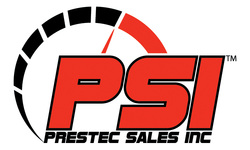Pump Noise Solution(s) from Cat Pump ®

Loud Knocking Noise
Loud knocking noises are an indication of worn bearings or loose connecting rods. The drive-end should be serviced as soon as you begin hearing these noises. NOTE: Drive-end servicing should be done by a trained technician. If you are familiar with Cat Pumps, the Drive-End Servicing technical bulletins will guide you through the process.
With proper installation and periodic liquid-end maintenance, drive-end servicing is seldom required. Regular oil changes and seal replacement will prolong the life of your drive-end.
When the pump continues to run with worn seals, not only do you experience low pressure, but you run the risk of liquid leaking back along the plunger (or piston) rods and entering the crankcase. This will contaminate the crankcase oil and affect, bearings, crankshaft and connecting rods and result in an expensive repair.
Loud Sucking Noise
Loud sucking noises typically indicate the pump is under stressful inlet supply.
Loud Screeching
Noise Screeching noises are typically an indication that belts are slipping. If this occurs at start up, the belts require adjustment. Review the center distance and belt length and adjust the belt tension. Review the belt selection to make certain adequate horsepower is being delivered. Periodically replace belts for optimum performance.
Loud knocking noises are an indication of worn bearings or loose connecting rods. The drive-end should be serviced as soon as you begin hearing these noises. NOTE: Drive-end servicing should be done by a trained technician. If you are familiar with Cat Pumps, the Drive-End Servicing technical bulletins will guide you through the process.
With proper installation and periodic liquid-end maintenance, drive-end servicing is seldom required. Regular oil changes and seal replacement will prolong the life of your drive-end.
When the pump continues to run with worn seals, not only do you experience low pressure, but you run the risk of liquid leaking back along the plunger (or piston) rods and entering the crankcase. This will contaminate the crankcase oil and affect, bearings, crankshaft and connecting rods and result in an expensive repair.
Loud Sucking Noise
Loud sucking noises typically indicate the pump is under stressful inlet supply.
- Review the inlet line size and length
- Inlet supply line should be at minimum equal to the pump inlet ports and preferably one size larger
- Check the demands on the supply line in your facility to assure there is enough supply when all demands are on
- Review the size of your supply tank and be certain it contains at least two baffles and the feed line from the tank is opposite the fill line
- Install the line out to the pump near the bottom for best flow
- Minimize the number of elbows and tees in the inlet line as each is a restriction on the flow to the pump
- Install flexible hose at the pump inlet
- If a booster pump is required to supply adequate inlet pressure, install a C.A.T. to stabilize the inlet pressure.
Loud Screeching
Noise Screeching noises are typically an indication that belts are slipping. If this occurs at start up, the belts require adjustment. Review the center distance and belt length and adjust the belt tension. Review the belt selection to make certain adequate horsepower is being delivered. Periodically replace belts for optimum performance.
